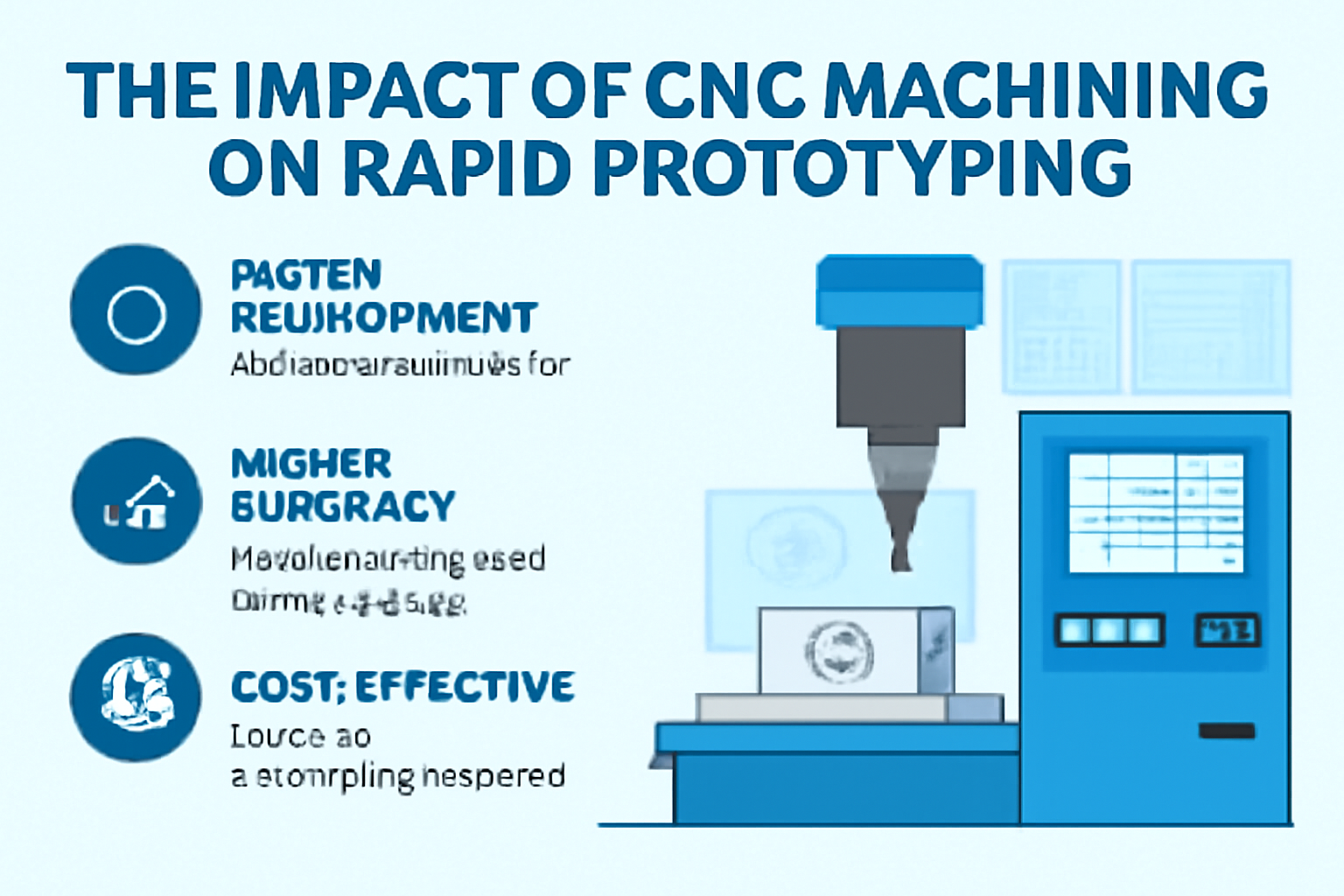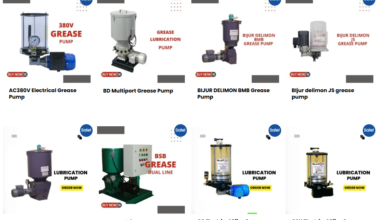The Impact of CNC Machining on Rapid Prototyping

Introduction to Rapid Prototyping
Rapid prototyping has revolutionized the way products are designed, tested, and brought to market. At its core, rapid prototyping is the quick fabrication of a physical part, model, or assembly using three-dimensional computer-aided design (CAD) data. This process allows designers, engineers, and manufacturers to swiftly translate ideas from the digital realm into tangible prototypes that can be tested, refined, and perfected before mass production.
The importance of rapid prototyping in modern product development cannot be overstated. It dramatically shortens product development cycles, reduces costs associated with design errors, and fosters innovation by allowing multiple iterations within a short time frame. Compared to traditional methods of prototype development, which could take weeks or months, rapid prototyping empowers teams to move at the speed of thought.
Traditional prototyping often involved manual machining or crafting techniques that were labor-intensive and prone to inconsistencies. Modern rapid prototyping, however, leverages cutting-edge technologies to deliver high precision and repeatability. Among these technologies, CNC machining stands out as a powerful tool that has significantly enhanced the rapid prototyping process, bridging the gap between concept and reality with unmatched precision and speed.
Understanding CNC Machining
CNC, or Computer Numerical Control machining, is a manufacturing process in which pre-programmed computer software dictates the movement of factory tools and machinery. This technology controls a range of complex machinery, from grinders and lathes to mills and routers. With CNC machining, parts are produced by removing material from a solid block (also called a workpiece) to create the desired shape.
The types of CNC machines commonly used in prototyping include CNC mills, CNC lathes, and CNC routers. Each machine has its unique advantages, but all share the capability to produce highly precise and repeatable parts from metals, plastics, and composites. This versatility makes CNC machining ideal for creating functional prototypes that closely resemble final production parts in terms of strength, finish, and mechanical properties.
One of the primary advantages of CNC machining technology is its ability to produce complex geometries with high accuracy. Since the machines follow exact instructions coded into CAD files, the risk of human error is minimized, and every prototype can be made exactly the same way. This reliability is critical when testing designs where slight deviations could lead to inaccurate results or failure.
CNC Machining Services and Their Role in Rapid Prototyping
When considering the ways rapid prototyping has evolved, cnc machining services play an indispensable role. These services provide access to advanced CNC machinery and expert operators who specialize in transforming digital designs into precise, physical prototypes with remarkable efficiency.
CNC machining services have transformed prototyping by significantly enhancing both speed and precision. By leveraging automated machinery, manufacturers can produce prototypes faster than ever before, accelerating the iterative design process. This allows engineers and designers to quickly test multiple design concepts and fine-tune details before committing to expensive tooling or mass production.
One of the standout benefits of these services is their ability to produce prototypes with tight tolerances and superior surface finishes. This is crucial for applications where prototype accuracy directly impacts performance testing and customer feedback. Additionally, CNC machining can handle a wide array of materials, from hard metals like aluminum and titanium to softer plastics, giving designers unprecedented flexibility in material selection.
The accessibility of professional CNC machining services means even small businesses and startups can now leverage high-end manufacturing technology without investing in costly equipment. This democratization of CNC machining accelerates innovation across industries, driving product development forward at a pace that was once unimaginable.
https://www.premiumparts.com/services/cnc-machining is one example of how such services provide comprehensive support, helping companies streamline the prototyping process from design to finished part.
Key Benefits of CNC Machining in Rapid Prototyping
One of the most significant impacts CNC machining has on rapid prototyping is the enhanced versatility it offers in material usage. Unlike some prototyping methods that are limited to plastics or resins, CNC machining can work with metals, composites, and a wide range of plastics. This material flexibility is crucial when prototypes must replicate the exact properties of production parts, especially in industries like aerospace, automotive, and medical devices.
Reduced lead times are another crucial benefit. CNC machining can deliver prototypes within days rather than weeks, thanks to its automated and streamlined production process. This speed helps companies respond faster to market demands and design feedback, fostering a more agile development cycle.
Improved design flexibility is also a notable advantage. CNC machining supports complex geometries and intricate details that may be challenging for other rapid prototyping technologies. Designers can push boundaries and explore innovative shapes and functions without being constrained by manufacturing limitations.
The surface finish and quality of CNC-machined prototypes often surpass those produced by alternative methods. Smooth finishes, precise edges, and dimensional accuracy contribute to prototypes that can be used for both functional testing and aesthetic evaluation. This level of detail is essential when the prototype is intended for presentations or customer demonstrations.
Cost-effectiveness emerges over the longer term as well. While initial CNC machining setups may seem more expensive than some quick prototyping techniques, the durability, accuracy, and reduced need for rework often lower overall development costs. Plus, CNC machining reduces the risk of errors that can delay production and inflate budgets.
Comparing CNC Machining with Other Rapid Prototyping Techniques
When weighing options for rapid prototyping, CNC machining often comes up against technologies like 3D printing and injection molding. Each method has its strengths and ideal use cases, but CNC machining provides unique benefits that make it the go-to choice in many scenarios.
Compared to 3D printing, CNC machining produces prototypes with superior strength and material properties. 3D printing is excellent for creating complex shapes quickly and inexpensively, but its material options and surface finish quality can fall short of CNC-machined parts. CNC machining also allows for working with metal alloys, which are often impossible to 3D print at prototype scale.
Injection molding is fantastic for high-volume production but is usually impractical for prototyping due to the high cost and time required to create molds. CNC machining, on the other hand, offers a cost-effective and fast alternative for producing one-off or small batches of prototypes that closely mimic injection-molded parts, enabling testing before committing to tooling investments.
Knowing when to choose CNC machining depends largely on the prototype’s purpose. If the goal is to test material properties, fit, or function in a real-world environment, CNC machining provides the accuracy and durability needed. For purely visual models or concept verification, 3D printing may be sufficient. For testing mass production feasibility, CNC machining bridges the gap perfectly between concept and manufacturing.
Real-World Applications and Success Stories
The influence of CNC machining on rapid prototyping is evident across numerous industries. From aerospace to medical devices, automotive to consumer electronics, the ability to quickly create precise, functional prototypes has been a game-changer.
In aerospace, for example, prototypes often require complex metal parts that must withstand extreme conditions. CNC machining can produce these parts with exact specifications, allowing engineers to test and refine designs that improve safety and performance. Similarly, medical device manufacturers rely heavily on CNC-machined prototypes to ensure biocompatibility and mechanical reliability before moving to mass production.
The automotive industry benefits from CNC machining by rapidly developing parts that must endure wear and tear, heat, and stress. Prototyping with CNC machining allows designers to test the fit and function of components like engine parts, brackets, and housings, helping reduce development time and avoid costly mistakes.
Consumer electronics companies also use CNC machining to prototype housings and internal components that require precise dimensions and high-quality finishes. This speed and accuracy facilitate faster product launches and better market adaptability.
These examples illustrate how CNC machining has accelerated innovation by enabling rapid iterations and reducing time to market. Companies that leverage this technology gain a competitive edge by refining their products faster and more efficiently than ever before.
Challenges and Considerations When Using CNC Machining for Prototyping
While CNC machining offers many advantages, it’s essential to understand some challenges involved. One notable consideration is the initial setup cost. Programming CNC machines and preparing materials require skilled labor and can involve higher upfront costs compared to simpler prototyping methods. However, this investment often pays off in accuracy and repeatability.
Another challenge is the complexity of certain designs. Although CNC machining excels at producing intricate parts, extremely complex geometries with internal cavities or undercuts may require multiple setups or alternative manufacturing techniques. Designers must balance design ambition with manufacturability when choosing CNC machining.
Material limitations also come into play. While CNC machining handles a broad range of materials, very soft or brittle materials may pose difficulties. However, advances in tooling and machine control continue to expand the range of machinable materials.
Despite these challenges, careful planning and collaboration with experienced CNC machining services can mitigate risks and maximize the benefits for rapid prototyping projects.
The Future of Rapid Prototyping with CNC Machining
Looking ahead, the future of rapid prototyping with CNC machining is bright and filled with innovation. Advancements in automation and artificial intelligence are making CNC machines smarter, faster, and more capable of producing complex parts with minimal human intervention.
Smart machining centers equipped with sensors and adaptive control systems can optimize cutting parameters in real-time, reducing waste and increasing efficiency. This level of precision and automation will make prototyping even more cost-effective and accessible.
Integration with other digital manufacturing technologies like additive manufacturing and advanced CAD software is also shaping the future. Hybrid approaches that combine CNC machining and 3D printing are already emerging, offering the best of both worlds: complex geometries and high precision.
As CNC technology evolves, its role in rapid prototyping will expand further, enabling innovators to push the boundaries of design and product development even more boldly.
Conclusion
The impact of CNC machining on rapid prototyping is profound and overwhelmingly positive. This technology has transformed how prototypes are created, enabling faster development, greater accuracy, and enhanced design flexibility. By offering superior material versatility, reduced lead times, and exceptional surface finishes, CNC machining empowers designers and engineers to bring ideas to life with unprecedented speed and precision.
While there are challenges, the benefits far outweigh them, making CNC machining an essential tool in modern rapid prototyping. As technology continues to advance, CNC machining will remain a cornerstone of product innovation, helping businesses stay agile, competitive, and ready for the future.


